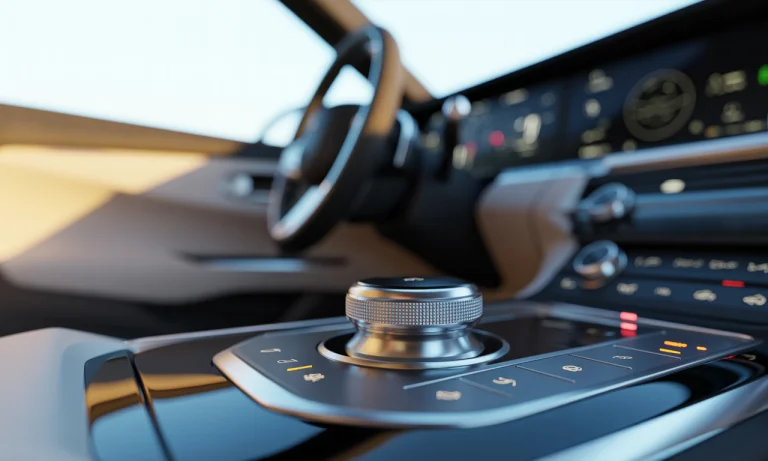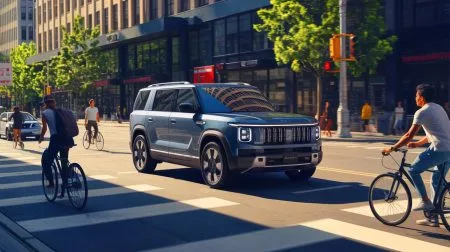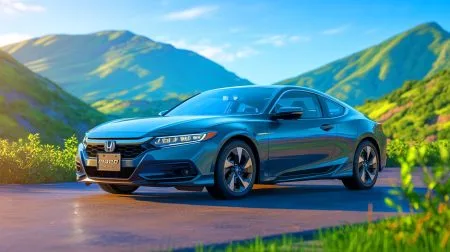Each morning in 2025, as commuters settle behind the wheel, a familiar ritual unfolds: hands glide toward a comforting, solid piece of hardware—the volume knob. In an age where touchscreens dominate the dashboards of BMW, Ford, or Mazda, the unassuming rotary dial survives, testament to tactile certainty and instant control. Automakers like BMW and Volkswagen have uncovered a striking truth: despite sophisticated advancements from Bose, Sony, or Alpine, drivers overwhelmingly prefer the immediacy of a physical knob over digital finesse. Lawsuits, customer feedback, and internal analytics all highlight a silent backlash against touch-capacitive controls and convoluted menus. Even brands renowned for design and audio excellence—think Bang & Olufsen, Bowers & Wilkins, Harmon Kardon—find themselves reevaluating their stance on what constitutes user-friendly car interiors. As designers debate the future and consumers yearn for familiar gestures, it’s clearer than ever: the humble volume knob is more than a relic—it’s the heart of the driving experience.
Why Volume Knobs Remain Indispensable in Modern Car Interiors
The digital wave once promised seamless dashboards, with Panasonic, Pioneer, and Kenwood showcasing minimalist interiors bursting with innovation. Yet, beneath these sleek surfaces, a conflict brewed. BMW’s extensive research, spanning over 10 million vehicles, revealed a crucial detail: drivers interact with their volume knobs far more frequently than expected, regardless of available steering wheel controls. Stephan Durach, BMW’s senior vice president of UI/UX, candidly admits: metrics show that even those traversing urban traffic still reach for the rotary dial, often to mute sound instantly or fine-tune their favorite JBL symphonies.
Other brands, like Volkswagen, have faced customer lawsuits, their foray into touch capacitance deemed too sensitive. The lesson? Physical feedback matters. It’s a safety net during high-speed commutes or moments of distraction—a necessity, not nostalgia. As technology giants like Sony and Panasonic reimagine audio systems, the tactile assurance of a volume knob stands out as a must-have interface, transcending trends and demographics. The story is less about resisting progress than about preserving intuitive interactions, ensuring every driver can stay connected without losing focus.
| Automaker | Volume Control Type | User Feedback |
|---|---|---|
| BMW | Physical knob & Steering wheel controls | High preference for knob |
| Volkswagen | Capacitive touch buttons | Sensitivity issues, lawsuits filed |
| Mazda | Fully touchscreen (third-gen CX-5) | Mixed; steering wheel used more |
| Hyundai | Physical buttons & some screens | Stated safer, but mixed implementation |
Touchscreens vs Knobs: The Driver’s Perspective on Safety and Usability
For Emma, a graphic designer driving her Pioneer-equipped crossover, the dashboard screen is a marvel—until rush-hour panic sets in. Fumbling through menus to drop the JBL volume is an ordeal she recounts after a near-miss. BMW’s studies echo her experience: physical knobs and essential controls like windows or mirrors remain vital, despite their digital alternatives.
Even industry titans like Ferrari and Hyundai have admitted their missteps in going “buttonless.” Developers at Aston Martin went so far as to measure a “piss-off factor”—quantifying not just the time lost, but the mounting driver frustration as essential functions disappear behind glass.
| Control Type | Driver Satisfaction (%) | Common Issues |
|---|---|---|
| Physical Knob | 92 | Rare hardware failure |
| Touchscreen | 68 | Distracted driving risk |
| Capacitive Buttons | 54 | Accidental input, unresponsiveness |
How Premium Audio Brands Drive the Volume Knob Renaissance
It isn’t just major automakers feeling the pushback. Premium audio names—Bose, Bang & Olufsen, Bowers & Wilkins, Harman Kardon—are deeply entwined in the movement to retain tactile sound controls. High-fidelity sound demands precision, and few things are less precise than jabbing at a screen during a winding highway drive. This sentiment crosses boundaries: whether piloting an electric BMW fitted with Bowers & Wilkins or a family SUV with Kenwood components, audiophiles and casual listeners value the ergonomic return of the trusty knob.
The synergy becomes clear as Kenwood rolls out its latest double-DIN head units, boasting both intuitive rotary dials and voice controls. JBL and Bose, striving for both style and substance, strike a balance by marrying sophisticated touch displays with easy-grip rotary encoders. Not only do these brands ensure optimal acoustics, but they also ensure the user doesn’t sacrifice safety or familiarity for innovation’s sake.
Designing for Human Instincts: Lessons from Lawsuits and Industry Reversals
Automotive history is littered with short-lived trends, but the push against tactile absence is unprecedented. Volkswagen’s return to real buttons feels like an industry apology, prompted by negative feedback and legal battles. Observers note that previous reluctance to retain physical controls arose from a desire for visual simplicity—now often derided as “form over function.”
As customer demands steer design, brands like Panasonic and Alpine are integrating hybrid controls, combining touchscreens with clear analog elements. Aston Martin’s internal studies, measuring real frustration in menu navigation, have set a new standard for empathy-driven engineering. Across the market, these lessons reinforce an enduring message: the best interfaces anticipate instinctive needs, not just aesthetic trends. The story of the volume knob is evolving, but its presence in tomorrow’s cockpit looks ever more certain.
Questions that Matter about Volume Knobs and In-Car Audio
Why are drivers dissatisfied with touchscreen-only audio controls in cars?
Touchscreens force drivers to look away from the road and navigate menus, increasing distraction and reducing safety. Unlike a Sony or JBL rotary knob, touchscreens lack tactile feedback, leading to frustration and slower reaction times, especially in urgent situations.
Which premium audio brands prioritize physical volume knobs in their designs?
Brands like Bose, Kenwood, Harman Kardon, Bang & Olufsen, and Bowers & Wilkins continue to emphasize the inclusion of high-quality tactile knobs, understanding that precise, instinctive adjustment remains vital for drivers and audiophiles alike.
Have automakers responded to customer backlash regarding digital controls?
Yes, several, such as Volkswagen and BMW, have reintroduced physical buttons and knobs after fields tests, lawsuits, and customer data highlighted safety and usability concerns.
Do steering wheel audio controls replace the need for a volume knob?
While steering wheel controls offer convenience for some adjustments, studies show that drivers still prefer the tactile feedback and flexibility of a dedicated volume knob, particularly when making rapid changes or seeking to mute quickly.
How do lawsuits and industry research influence future car interior design?
Legal action and negative feedback have compelled automakers to reconsider design choices, resulting in a resurgence of physical controls and the integration of hybrid interfaces that blend digital innovation with tactile reliability.
Did you like it? 4.7/5 (29)







